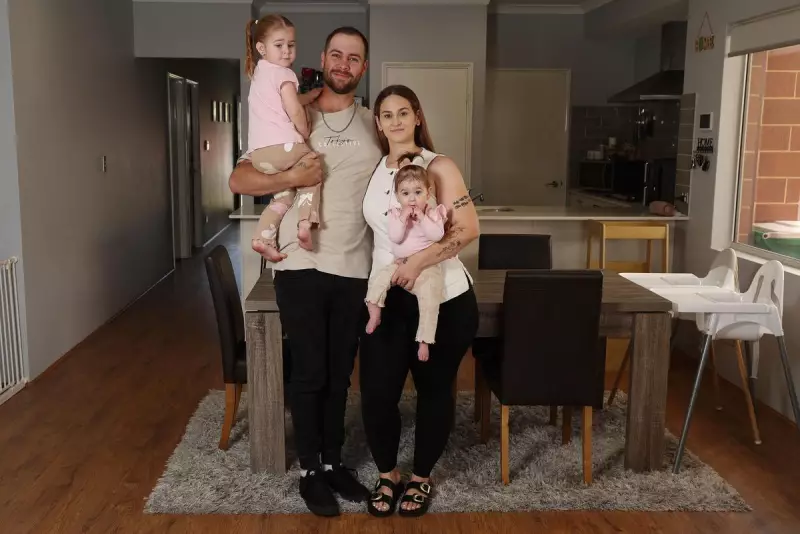
The AI Revolution Transforming Australian IVF
Nearly five decades after the world welcomed its first IVF baby, Australian fertility science is entering a groundbreaking new era powered by artificial intelligence. This technological shift promises to make fertility treatment more accessible, affordable, and successful at a time when Australia's birth rate has hit record lows and demand for IVF services continues to surge.
Perth clinics are reporting a 20 per cent increase in IVF demand within just 12 months, driving fertility specialists to turn to AI and machine learning solutions. The technology is already being deployed in Australian clinics for embryo selection, sperm analysis, and follicle measurements, with global breakthroughs this year including the first baby born via a fully automated system.
Addressing Australia's Fertility Education Gap
With one in every 16 Australian babies now conceived through IVF, leading Western Australian fertility specialist Dr Tamara Hunter emphasises the need for broader conversations about the nation's falling birth rate. "We are very good at educating secondary school students on contraception. We are terrible at teaching them about reproduction," Dr Hunter states.
The specialist reveals that 25 per cent of her patients are now over 40 and seeking to have their first child. "My jaw hits the table every day when women in their late 30s and early 40s don't realise fertility declines with age," she says. Dr Hunter attributes this to human biology failing to keep pace with sociological changes, noting the average age of first-time mothers now exceeds 30, while women are biologically evolved to have children in their 20s.
How AI is Improving IVF Success Rates
Current IVF success rates for women in their mid-30s without known fertility issues range between 40 to 50 per cent per embryo transfer. AI technology aims to significantly improve these odds through several innovative applications.
Monash IVF and other clinics now use machine learning models to analyse time-lapse images of developing embryos. "Instead of taking an embryo out of the incubator and looking under the microscope, we leave it in the incubator and we can see things happening at every point in embryo's development," Dr Hunter explains.
This year marked a significant milestone with the birth of the first baby conceived by a fully automated AI system, developed through collaboration between Mexican company Conceivable Life Sciences and a US-based team. The technology replaced humans with AI and a remote operator to perform the intricate intracytoplasmic sperm injection procedure, which normally requires about 23 manual steps.
Emma Ebinger, scientific director at Australian clinic Adora Fertility, witnessed this landmark technology at the American Society for Reproductive Medicine's annual conference. "In IVF the lab side is very manual, embryologists can have up to 200 manual processes," she notes. While the robotic technology currently takes longer than human embryologists, it represents the beginning of how automation can assist in addressing growing worldwide demand for IVF services.
Real Stories Behind the Statistics
Western Australian mother Alysha Halil represents the human face behind these technological advancements. She and partner Sean Elsegood commenced fertility treatment with Adora after struggling for two years due to borderline Polycystic Ovarian Syndrome. After losing over 50kg to become eligible for treatment, Ms Halil faced devastation when no embryos survived her first IVF cycle.
Against the odds, a single embryo from her second cycle resulted in daughter Isabella, now two. The couple later welcomed second child Isla, eight months ago. "Being so young, infertility was something I didn't think about," Ms Halil reflects.
The Future of Fertility Treatment in Australia
Looking ahead, scientists overseas are working towards creating viable eggs and sperm in laboratories using adult skin or blood cells. The technique, known as in vitro gametogenesis, remains at least seven years away but could revolutionise reproductive medicine, particularly for transgender individuals and childhood cancer survivors.
Dr Hunter advocates for workplace reforms to support would-be parents, suggesting employers offer subsidies for egg freezing and create more family-friendly contracts. "We're already doing it for menopause, why aren't we doing it for reproductive age women?" she questions.
Across Western Australia, the number of women undergoing IVF increased by 2 per cent to 6,249 in 2024-25, while treatment cycles rose 15 per cent to 10,053. Nationally, recently released data reveals that 6.3 per cent of all women who gave birth in Australia in 2023 underwent IVF, with fertility preservation increasing by 27.9 per cent in 12 months.
While AI-driven advancements will continue growing exponentially, Dr Hunter believes they will enhance rather than replace human expertise. "Certain things require human oversight or performance," she states. "What that does is free up the embryologist for the thoughtful stuff, for the thinking and the innovation, and just letting the AI machines do the hack work."





